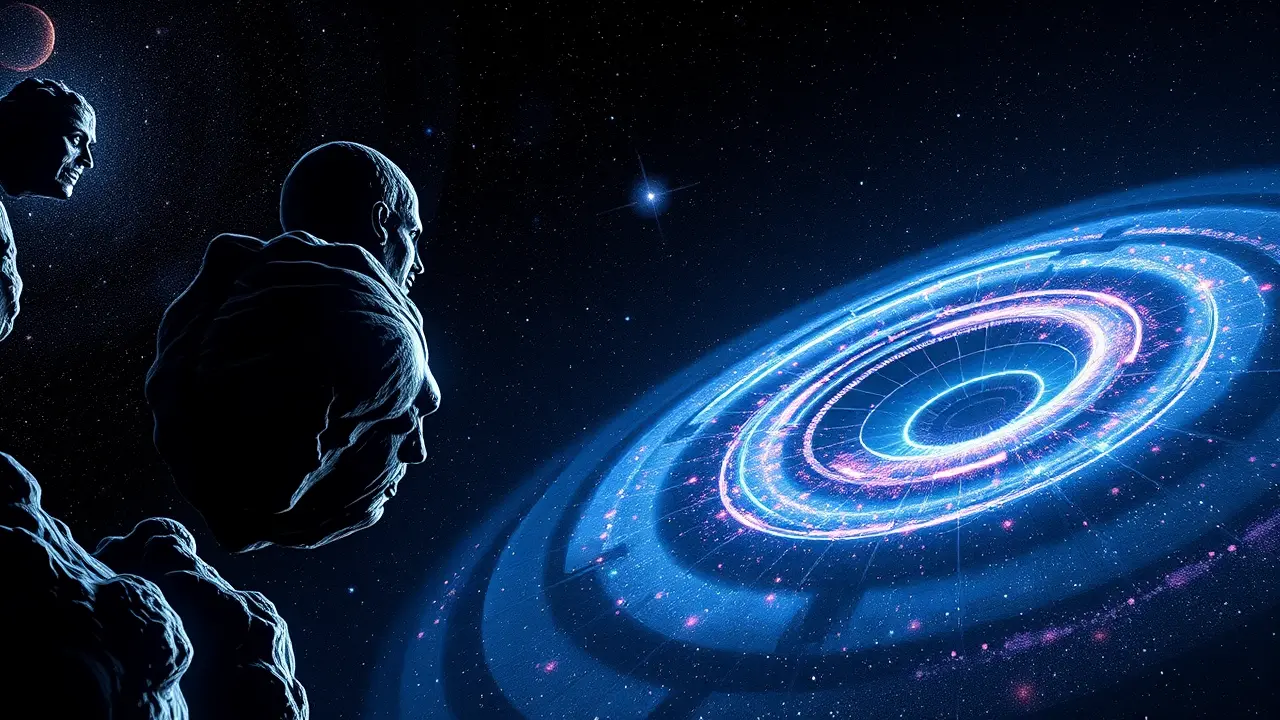
Sciencespace & astronomyBlack Holes and Galaxies
Colossal stars forged the Universe’s earliest clusters
TH
Thomas Green
5 hours ago7 min read1 comments
In a revelation that fundamentally reshapes our cosmic origin story, a team of pioneering astrophysicists has uncovered the monumental role played by colossal stars, behemoths thousands of times more massive than our own Sun, in forging the very architecture of the infant universe. These stellar titans, burning with ferocious intensity and doomed to ephemeral lives, were not merely participants in the early cosmos; they were the master architects, sculpting the earliest star clusters and laying the foundational stones for the first galaxies.Imagine, if you will, a celestial foundry of unimaginable scale, where these short-lived giants acted as nature's ultimate particle accelerators. Within their searing cores, nuclear furnaces far more potent than anything in the contemporary universe fused primordial hydrogen and helium into a bizarre cocktail of heavier elements, creating the strange and distinctive chemical fingerprints that we now observe, like ancient fossils, embedded within the oldest globular clusters orbiting our Milky Way.This isn't just a minor footnote in stellar evolution; it's the key to decoding the chemical anomalies that have long puzzled astronomers—why some ancient stars possess such peculiar ratios of elements like oxygen, sodium, and aluminum. The explanation lies in the uniquely violent life cycles of these primordial monsters.Their sheer mass would have generated immense internal pressures, triggering exotic nuclear reaction chains that don't occur in smaller, longer-lived stars, thereby polluting their birth clouds with a specific chemical signature before they met their cataclysmic ends. And what spectacular ends they were.The fate of such massive objects pushes the boundaries of physics, suggesting that after a life lasting only a few million years—a mere blink in cosmic time—these stars would have collapsed under their own immense gravity. This collapse wouldn't have been a simple supernova; it was likely a hypernova or a direct collapse event so powerful it could have seeded the universe's very first black holes, planting the gravitational seeds around which future galaxies, including our own, would eventually coalesce.This research, echoing the visionary spirit of Elon Musk's ambition to make humanity multi-planetary by forcing us to look back to our deepest origins, bridges the gap between the infinitesimal quantum world and the grandest cosmic structures. It posits that the supermassive black holes lurking at the centers of galaxies today, weighing billions of solar masses, may have grown from these initial 'heavy seeds' provided by the demise of the first stellar generation.The implications ripple through modern astrophysics, offering a more coherent narrative for the rapid assembly of structure in the early universe, a period that followed the cosmic dark ages. By running sophisticated supercomputer simulations that model the conditions of the early universe—a hot, dense soup of dark matter and primordial gas—scientists can now watch as these titanic stars form in isolation within dark matter halos, their brilliant but brief lives flooding their surroundings with both intense radiation and newly forged elements.This dual legacy of light and metal was crucial; the radiation ionized the neutral hydrogen of the intergalactic medium, helping to end the cosmic dark ages, while the dispersed heavy elements provided the necessary 'dust' for subsequent generations of smaller, longer-lived stars to form more efficiently. It's a cosmic feedback loop of creation and destruction on an epic scale, where the death of one generation of stars directly enables the birth of the next, ultimately paving the way for the rich galactic ecosystems we observe today. This discovery doesn't just add a chapter to the textbook; it rewrites the prologue, transforming our understanding of cosmic dawn from a vague sketch into a dynamic, dramatic narrative of stellar titans whose brief, brilliant lives set the stage for everything that followed.
#featured
#astrophysics
#star clusters
#early universe
#massive stars
#black holes
#chemical fingerprints
#globular clusters
Stay Informed. Act Smarter.
Get weekly highlights, major headlines, and expert insights — then put your knowledge to work in our live prediction markets.
Related News
© 2025 Outpoll Service LTD. All rights reserved.
